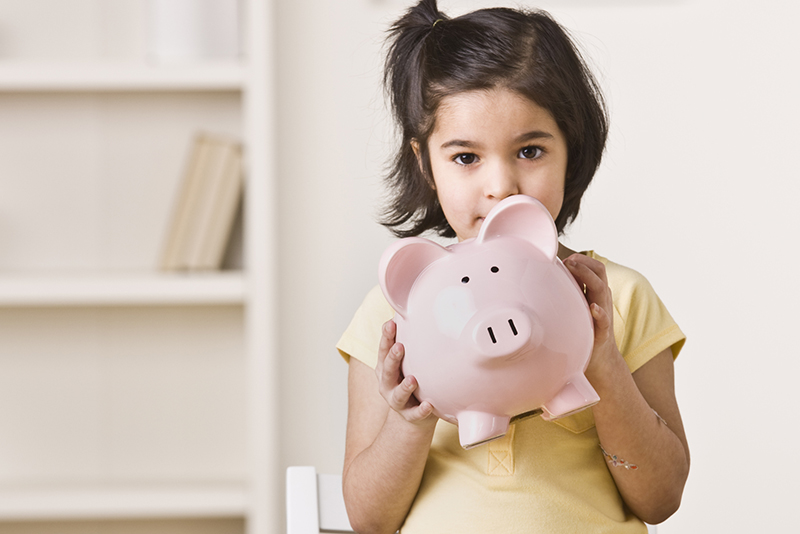Families For Life | Dollars and Sense

Parents usually focus on teaching their child the three R’s (Reading, wRiting and aRithmetic). The one thing they overlook often is teaching of good personal finance.
Research show when it comes to inculcating good financial attitudes and decision-making in children, it is best to start early and with frequent practice.
A study in the journal of Management Science in 2014 by University of Colorado, Boulder researchers, found that it takes just five months usually to lose what is learnt in an hour of financial education.
Ms. Jaclyn Smith, Assistant Curriculum Manager with Learning Vision, Busy Bees Singapore, agrees.
She says, "It's best to reinforce basic money concepts through daily social interactions in meaningful situations of familiar environments".
"It is never too early to start to inculcate positive attitudes towards money and develop good financial habits in young children - in fact, it may be easier to instil good habits when taught earlier in life".
What is more, equipping children with financial literacy goes beyond educating them about the basic concept of money and managing it.
"In the young, it is more important to encourage a healthy attitude about money and develop healthy behaviours towards it. Embedding attitudes and values such as frugality, diligence and gratefulness may be more important to empower them in many situations they will encounter in life," Ms. Smith says.
Grasping abstract financial concepts may be difficult at a young age, so think how you can teach your child through role play, activities and games.
"Studies show that some of the best ways to promote financial literacy in young children is to create experiences that introduce three topics - spend, save and share," suggests Ms. Smith.
The American non-profit organization, Jump$tart Coalition for Personal Financial Literacy, suggests the following techniques for kindergarten-aged children:
Earn
Talk with your child about earning money. Introduce the notion of working for money and identify age-appropriate jobs for starting. Simple house chores can be a simple way of starting earnings in early life.
Save
Talk with your child about the ‘why’ of saving the money earned. Set up a savings till like a piggy bank. Periodically count the total in the bank with your child and set small purchase goals as a bonus for accumulating savings.
Give
Instead of spending money, teach your child the virtue of giving. Introduce the concept of charity to your child and make a visit to a charity of your choice with your child to show how giving can benefit others in need.
There are so many more ways of introducing and instilling good financial habits. Here are fun games and activities to try:
Grocery shopping
"Children always enjoy it when they get to participate in 'adult business'," Ms. Smith says.
"They feel a great sense of responsibility and pride when they are recognised as valued contributors and have an important task or mission to complete. "To involve your child this way, draw up a shopping list of food items for a family meal and if appropriate, tell your child what the budget is. At the store, talk about the cost of the various items on the list. After selecting the items to buy, explain your ‘why’ behind the choices. Review the budget with your child and explain what it means to keep financial discipline.
This activity is not only a great way to introduce the concepts of budget and financial planning to your child, it also helps your child grow become wise about spending.
"Involving children in the shopping process is a great way to introduce how different items have different costs. Parents can draw children's attention to the price tag, discuss the quantity of items to purchase and have on-going dialogues on whether items are a need or a want given the budget they have to work within," says Ms. Smith.
"It creates meaningful platforms for parents to model and demonstrate various elements of financial literacy, and is a great way to teach negotiation skills. "Such lessons can be reinforced too through pretend shopping at home.
Learning cashiering
Introduce cash notes and coins to your child, explaining the different denominations as you do. Teach your child to sort, count or match different coins and notes.
Once your child is familiar with coins and notes, it is time to introduce the concept of change, for which the most effective way is known as "counting up". Show your child how to count from the amount spent to the amount tendered.
For example, if you need change from $1 for an item that costs 65 cents, count (with coins) from 65 cents, to 70 cents (add a 5 cent coin), to 80 cents (add a 10 cent coin), to $1 (add a 20 cent coin). The amount of change needed is the total amount of coins added (5+10+20).
Once your child gets the idea, practice in the real world. Let your child count out money to pay for an item and check the amount of change received. This is also a great way to reinforce math ability for addition and subtraction.
Learning that sharing is caring
Money games can be fun but they mostly focus on spending and saving money, so don't neglect to teach your child about sharing as well.
“Get them into the habit of sharing early,” says Ms Smith.
"One of the best ways to start such a habit in young children is to model the behaviour," she advises. "Invite and involve children to participate in acts of sharing with you. Make it a habit to talk about things which they are thankful for."
"Such dialogues promote a sense of gratitude in our children. Studies have shown that children who are more grateful are more likely to grow up to become happy children. When children feel grateful for what they have and who they are, they become willing to share.”
Contributed by:
Early Childhood Development Agency